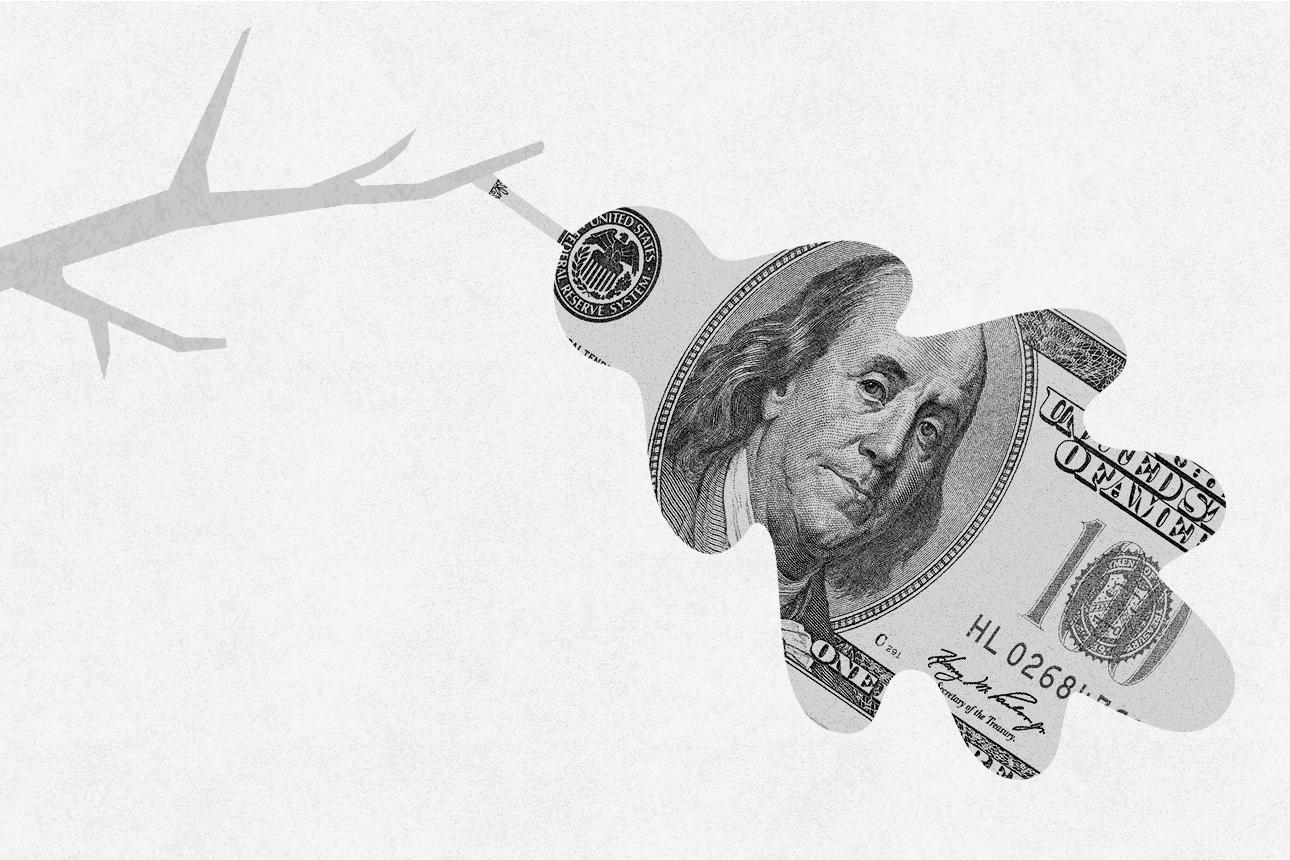Topics
Column
Our expert columnists offer opinion and analysis on important issues facing modern businesses and managers.
More in this series
Carolyn Geason-Beissel/MIT SMR | Getty Images
Corporate sustainability efforts are seemingly facing a slump of low enthusiasm, with some tired clichés like “sustainability always costs more” resurfacing. It’s a blunt, unnuanced argument. The business case for sustainability is still sound. Broadly speaking, when done well, sustainability initiatives do one or more of the following: lower costs, reduce risk, drive innovation, raise revenues, and enhance intangible value. In short, investing in sustainability does pay off.
But contrary to what many seem to think, the argument for sustainability is not that it’s easy or always “win-win” in the short run. It’s that it’s strategic and creates value (sometimes short, sometimes long). And sustainability is, by definition, win-win in the longer run; there is no growth for business or the economy on a dying planet with unhealthy people. In areas ravaged and made uninhabitable by climate change — from extreme heat, storms, floods, or rising seas — economic activity essentially stops. Gross domestic product falls to approximately zero.
Get Updates on Transformative Leadership
Evidence-based resources that can help you lead your team more effectively, delivered to your inbox monthly.
Please enter a valid email address
Thank you for signing up
The short run is where the real debate happens, and it’s surprising how often you hear pundits (and CFOs) say with confidence that sustainability doesn’t make sense because it costs more or “has a negative NPV” (net present value). Official-sounding language like that makes the assertion sound like it’s based on deep research.
But there’s always been absurdity in these arguments. Asking for some measurement of value is of course fair, but imagine declaring that other business priorities — like marketing, R&D, manufacturing improvements, or HR — always cost more. And that their costs should make them off-limits. That would sound nonsensical since there’s no free lunch — every activity costs something in human or financial capital.
With more nuance, you might say that any business function, if handled poorly, can lose money. Also, whatever calculation you use to determine value creation — NPV, internal rate of return — will miss many things that are hard to measure, such as brand loyalty, employee engagement, innovative culture, and more. Does the declaration of negative NPV for sustainability even calculate those things?
Many smart, strategic decisions in business cost more (even a lot more) than doing nothing.
All that said, as one of the longtime proponents of the business case for sustainability, I’m happy to stipulate (and I have before) that sometimes sustainability does cost more upfront. At times, that’s the point — improving human rights and offering living wages raises direct costs on purpose (it can then create value from lower turnover, higher employee engagement, more people who can afford to buy your product, and so on). Choosing to use more sustainable materials — lower carbon, less toxic, or more recyclable, for example — can initially cost more as well, especially if they’re relatively new and small in scale.
But so what?
Many smart, strategic decisions in business cost more (even a lot more) than doing nothing. Only in sustainability is that considered a deep problem. There are a few interrelated myths (or laughable whoppers) that get in the way of making a better decision when it’s made under the banner of “sustainability.”
Let’s explore them.
Three False Assumptions That Stymie Action
The road to taking action on sustainability issues is paved with booby traps: beliefs that feed the excuses to stop movement before it starts. Specifically, when complaining that sustainability “costs more,” there are inherent assumptions that business leaders always minimize costs, always rely on ROI, or rarely make big bets.
Myth: Businesses always choose the lowest cost option. Sure, in some parts of business, like procurement, penny-pinching dominates. But even there, a commitment to the lowest price is not ironclad. You could, as companies did in an earlier era, lower costs with child or slave labor, or by throwing out safety concerns and quality goals. Each of those areas were once seen as too expensive — a century ago the chair of the National Association of Manufacturers said that a ban on child labor would deprive children of the chance to develop “good industrial habits.” But now avoiding child labor and prioritizing safety and quality are taken for granted and assumed to create value.
Many leading companies choose to strategically spend on sustainability. Take, for instance, Trane Technologies, an industrial leader in climate control systems (full disclosure: I work as an adviser to Trane). It has faced an interesting choice: One way to reduce the embedded carbon footprint of its sizable commercial chillers is to buy so-called low-carbon steel (where manufacturers use electricity instead of onsite fossil fuels or capture carbon in production). At the current scale of the newer technologies, this steel costs more.
Scott Tew, a Trane vice president, and his sustainability team sought chair and CEO Dave Regnery’s OK to convert some of their steel supply to the low-carbon option. Regnery made a strategic call, approving it because, he told me, “We’ll sell more.” The bet was that some of their big customers, in particular the giant data centers that need vast cooling so that they don’t burn down, want lower-carbon options to fulfill their own climate goals (and counteract the rapid growth in energy use and emissions from the exponential rise of AI).
As Tew adds, “When you say that sustainability costs more, I say, ‘More than what?’ Don’t innovations and next-generation products often cost more? But they come with new features and upgrades — look at a robot vacuum compared to a Hoover.” In this case, at two places in the value chain — Trane buying from its steel supplier and tech companies buying from Trane — B2B customers are choosing to spend more for what’s essentially the Roomba of chillers.
An important side note: The idea that consumers always choose the lowest price is also a myth. Of course, for staples (bread, eggs, gas), people will seek savings, use less, or make a substitute. But for many mass-market products, only a minority buy solely on price. If all of us did, we’d all be wearing low-cost T-shirts and driving Chinese or Indian minicars that cost less than $5,000 (the Changli Nemica can be yours for $1,249).
Myth: Business leaders always depend on hard numbers and ROI. This sounds so logical, and it’s certainly what my now-dated economics degree taught me. Companies, microeconomics assumed, will enter new markets or produce more until marginal profits for the industry go to zero. What a lovely model that completely ignores both the oligopoly power in many sectors and also how human brains actually work.
Decades of work on behavioral psychology and behavioral economics (scholarship that has won Nobel Prizes) have brought in reality. We all — and that includes CEOs — have cognitive biases and make decisions for many reasons. We often move based on gut feeling and experience, with detailed data providing backup for a decision already made.
I once met with a top exec at a hospitality company that was spending millions on mobile tech to improve the customer experience and allow people to check in on their phones. I asked him how they knew this was a good investment, and he said, “We just know.” I’m sure they had run some ROI calculations, but clearly he was relying more on a strong sense they were right.
Some sustainability investments are inherently hard to put an exact ROI on.
Similarly, today there’s huge spending, without exact ROI, on data security and AI. Nobody wants to fall behind, but nobody knows how this will play out either. As the editor in chief at Fortune recently wrote, “The gap between what we’re spending on AI and the business it’s generating is the $600 billion elephant in the room.” For most leaders, a gut thing is telling them that the ROI will be there at some point.
Some sustainability investments are inherently hard to put an exact ROI on. The payback from good water management can be, um, fluid. It may look expensive to, say, help a community conserve water or support wetlands restoration. But what if that work allows the business to operate in a drier future? Being able to function at all is quite the payback.
Myth: Business leaders rarely take expensive leaps of faith. So no — if this were true, there wouldn’t be much innovation. But it is true that making expensive choices takes some courage in the face of investor pushback. I was struck by a story in Fortune’s recent Global 500 issue focusing on Walmart, the world’s No. 1 company by revenue, and its 10-year CEO, Doug McMillon.
In the 2010s, McMillon repeatedly “announced plans for big e-commerce investments and increases in wages that were aimed at improving Walmart’s service and digital firepower,” the article notes. Walmart had been far behind Amazon in e-commerce. But by 2023, Walmart’s e-commerce revenue alone topped $65 billion, which, while not close to Amazon’s $574.8 billion, would still rank that part of the company 60th on Fortune’s list (bigger than IBM, Deere, or Merck).
McMillon’s decision looks savvy now, but when he proposed these moves, Fortune says, “commentators fumed and shares tumbled.” In almost every story you read about a CEO doing something for the long haul without a clear payback, you hear about the analysts who punished them and didn’t understand.
It’s no coincidence that McMillon and his CEO predecessors at Walmart have all pursued large-scale sustainability efforts as well. Love it or hate it, Walmart jump-started the modern pressure on suppliers to assess their social and environmental footprints, and set a goal to cut 1 billion tons of carbon emissions from supply chains. Now the company is saying it wants to be “regenerative” (a concept similar to my own work on being “net positive”), which is not fully defined. It’s a leap. And investors have often been skeptical about this work as well.
There are a few things that the finance world does encourage spending on. Whatever direction merger and acquisition trends are going (for years it was about mergers, now it’s spinouts), investment banks love any type of M&A deal — they make money on the transaction either way. And Wall Street also enjoys technology waves like the dot-com boom, the rise of social media, and now AI. But remember, being right about a broad shift doesn’t mean every investment pays off (remember Myspace?).
Maybe it’s time to stop caring what the analysts think.
Today the leaps of faith and strategy are needed more than ever. Our problems are getting bigger and spinning out of control. Record heat, wildfires, floods, and storms are destroying parts of the world, and the United Nations reports that species extinction rates are accelerating (which can’t end well for anyone).
The old view that sustainability must prove its ROI to the decimal place does not fit the times — or how business actually runs. True leaders will recognize opportunities to choose to spend more to build a better product or service, to please customers that increasingly want a sustainability story, and to help build a thriving world. Let’s stop punishing them for doing it.
“The MIT Sloan Management Review is a research-based magazine and digital platform for business executives published at the MIT Sloan School of Management.”
Please visit the firm link to site






